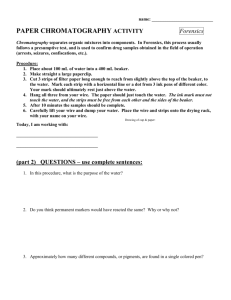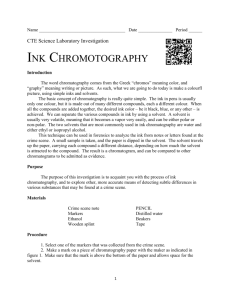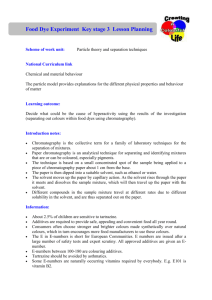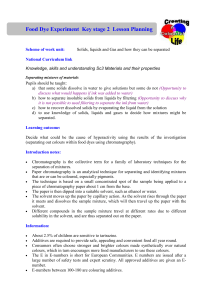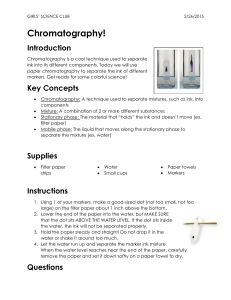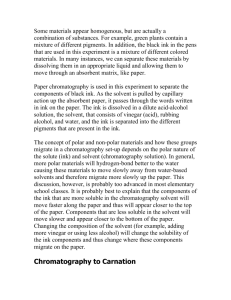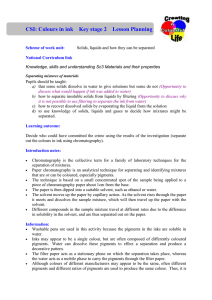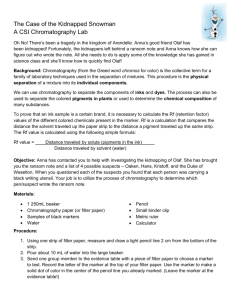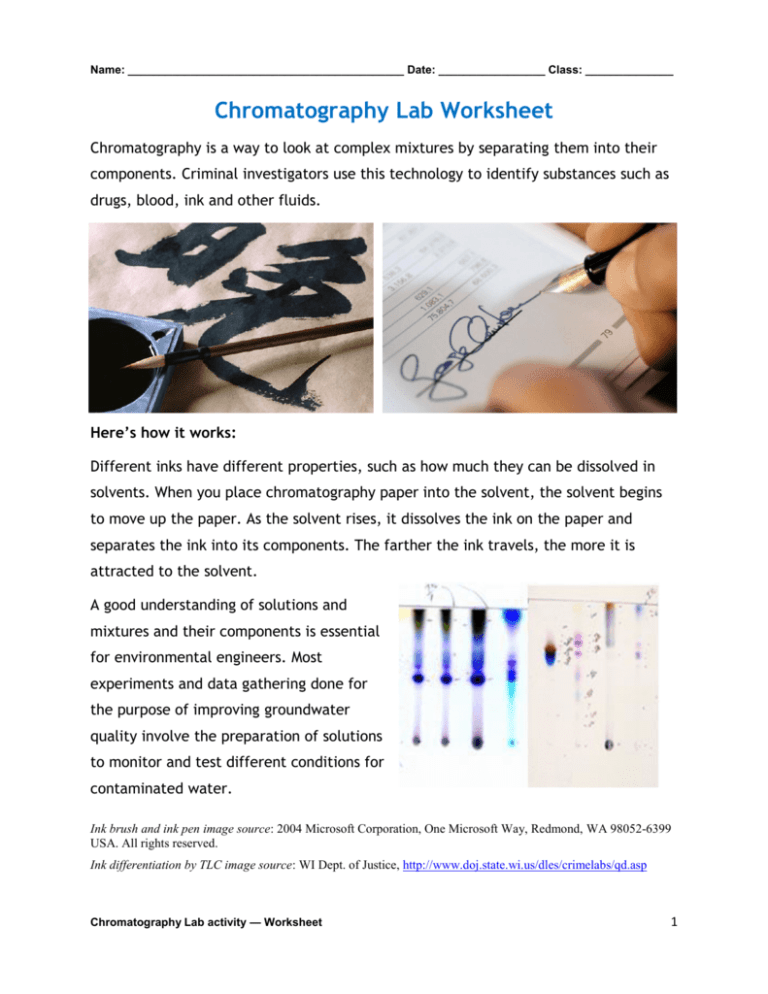
Name: ____________________________________________ Date: _________________ Class: ______________
Chromatography Lab Worksheet
Chromatography is a way to look at complex mixtures by separating them into their
components. Criminal investigators use this technology to identify substances such as
drugs, blood, ink and other fluids.
Here’s how it works:
Different inks have different properties, such as how much they can be dissolved in
solvents. When you place chromatography paper into the solvent, the solvent begins
to move up the paper. As the solvent rises, it dissolves the ink on the paper and
separates the ink into its components. The farther the ink travels, the more it is
attracted to the solvent.
A good understanding of solutions and
mixtures and their components is essential
for environmental engineers. Most
experiments and data gathering done for
the purpose of improving groundwater
quality involve the preparation of solutions
to monitor and test different conditions for
contaminated water.
Ink brush and ink pen image source: 2004 Microsoft Corporation, One Microsoft Way, Redmond, WA 98052-6399
USA. All rights reserved.
Ink differentiation by TLC image source: WI Dept. of Justice, http://www.doj.state.wi.us/dles/crimelabs/qd.asp
Chromatography Lab activity — Worksheet
1
Procedure
1. Take the strips of chromatography paper and fold both pieces about an inch
from the top.
2. Using the black Sharpie, draw a horizontal line near the other end of the
chromatography paper. Make the line about as high off the bottom as the
length of your thumb.
3. Use a pencil to suspend the paper in each beaker. Make sure the strip does
not touch the sides of the beaker.
4. Carefully add water to one beaker and alcohol to the other. Add just enough
of each liquid so that it touches the bottom of the hanging strip.
5. Watch what happens!! Once you see the ink separation is complete, get
new strips and repeat using ink from a colored Sharpie marker.
Questions
1. What were the two solvents used?
2. Black ink is more attracted to which solvent? How do you know?
3. What colors are present in black ink?
4. What do these colors represent?
5. How might the ability to separating solutions into their components be
important to environmental engineers looking into water quality issues?
Chromatography Lab activity — Worksheet
2


